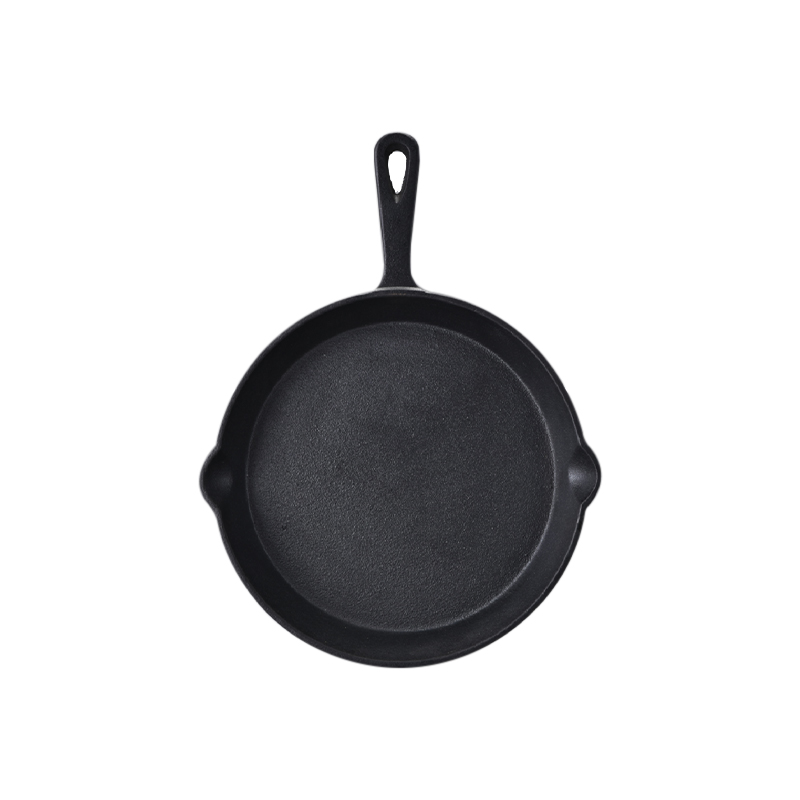Integrating a cast-iron frying pan with a lid into your kitchen collection brings a set of practical attributes that align with both casual cooking and more intentional meal preparation. Its timeless design and functional versatility have made it a staple in kitchens for generations. Let's explore the characteristics that make this cookware a recurring subject of discussion among cooking enthusiasts.

Adaptability in Cooking Methods
This combination of pan and lid supports a wide range of culinary techniques, eliminating the need for multiple specialized pots and pans.
A Single Vessel for Multiple Tasks
The pan itself excels at frying, searing, and sauteing, while the addition of a lid expands its capabilities to include methods that rely on trapped heat and moisture. Simmering a hearty stew until flavors meld, braising root vegetables until tender, or even cooking rice with precise moisture control. All can be accomplished in this one vessel. This versatility simplifies meal prep, reducing the number of dishes to clean and streamlining the cooking process.
Continuous Cooking Flow
The ability to start a dish on the stovetop and finish it in the oven creates a seamless cooking rhythm. For example, you can sear a chicken thigh to develop a golden crust over the stovetop, then add aromatics and a splash of broth, cover with the lid, and transfer to the oven to cook until the meat is juicy and tender. This method ensures ingredients achieve both depth of flavor from the initial high heat and even doneness from the gentle oven finish.
Heat Distribution and Retention Qualities
The inherent properties of cast iron significantly influence cooking results, making it a favorite for techniques that demand consistent temperature management.
Steady and Even Heat
Cast iron absorbs heat slowly and evenly across its entire surface, minimizing hot spots that can lead to uneven cooking. Whether you’re sautéing a pan of mushrooms or searing a piece of fish, this steady heat ensures every ingredient cooks at the same rate, resulting in balanced textures and flavors.
Holding Temperature
Once heated, cast iron retains temperature for a sustained period. This quality is particularly useful for searing, as the pan maintains the high heat needed to lock in juices and create a crisp exterior. It also works well for keeping food warm at the table—whether you’re serving a skillet of cornbread or a batch of roasted vegetables—ensuring each bite stays at the ideal temperature.
Long-Term Durability
With appropriate care, a cast-iron frying pan with a lid can serve as a reliable kitchen companion for years, often outlasting many other types of cookware.
Robust Construction
The thick, sturdy construction of cast iron makes it resistant to the wear and tear of regular use. It can withstand high heat without bending, warping, or developing dents, even when used for heavy-duty tasks like cooking large cuts of meat or stir-frying dense ingredients.
A Lasting Kitchen Item
Unlike some cookware that deteriorates over time, cast iron can actually improve with age when properly cared for. Its resilience means that with attention to cleaning, drying, and occasional maintenance, it can remain a functional and beloved part of your kitchen for decades, often being passed down through generations.
A Surface That Changes with Use
Seasoning—the process of applying a thin layer of oil and heating it to create a polymerized coating—builds a natural non-stick surface that grows smoother and more effective with each use. Every time you cook with oil, you’re adding to this patina, which not only prevents food from sticking but also adds a subtle depth of flavor to dishes.
Connecting with the Process
Its weight and heat-retaining properties require intentional preheating and temperature control, prompting cooks to slow down and stay present. Whether you’re adjusting the stove to prevent burning or waiting for the pan to reach the perfect searing temperature, this mindfulness often leads to more thoughtful, successful cooking.
From Stove to Table, Many cast-iron pans feature a classic, rustic design that makes them presentable enough to go directly from the oven to the dining table. This not only reduces the number of dishes to wash but also keeps food warm longer, allowing everyone to enjoy meals at a leisurely pace without worrying about cooling plates.



